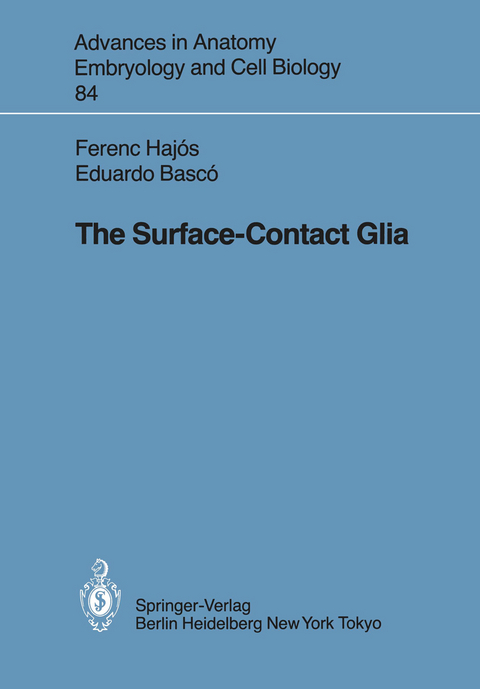
The Surface-Contact Glia
Springer Berlin (Verlag)
978-3-540-13243-1 (ISBN)
1 General Introduction.- 1.1 Brief History.- 1.2 Development of the Glia: Current Views and Problems.- 2 Materials and Methods.- 3 Postnatal Cell Proliferation at Nongerminal Sites of the Brain.- 3.1 Introductory Remarks.- 3.2 Mitotic Activity at Nongerminal Sites of the Immature Cerebellar Cortex.- 3.3 Mitotic Activity at Nongerminal Sites of the Immature Forebrain: Time Course and Regional Distribution.- 3.4 Comments.- 3.5 Light and Electron Microscopic Description of [3H] Thymidine-Labeled Cells at Nongerminal Sites of the Postnatal Brain.- 3.6 Comments.- 4 Radial Glia in the Pre- and Postnatal Brain.- 4.1 Introductory Remarks.- 4.2 GFAP Immunocytochemistry of the Developing Forebrain.- 4.3 Silver Impregnation of the Forebrain Radial Glia.- 4.4 Comments.- 5 Demonstration of Proliferative Capacity of the GFAP-Immunoreaetive Radial Glia.- 5.1 Introductory Remarks.- 5.2 [3H]Thymidine Uptake into the GFAP-Immunopositive Radial Glia.- 5.3 Comments.- 6 Transport of Material by Glial Processes.- 6.1 Introductory Remarks.- 6.2 Transport of HRP by the Forebrain Radial Glia and Cerebellar Bergmanu Glia.- 6.3 Comments.- 7 Discussion.- 7.1 Proliferating Cells at Nongerminal Sites in the Early Postnatal Period.- 7.2 Persistence of the Radial Glia.- 7.3 Does Postnatal Glial Proliferation Involve Dormant Stem Cells or the Differentiated Glia?.- 7.4 Derivatives of and Mechanism of Derivation from the Radial Glia.- 7.5 Common Properties of Radial Glial Derivatives.- 8 Concept of the Surface-Contact Glia.- 9 Current Approaches to the Glia and Some Perspectives.- 10 Summary.- 11 References.- 12 Subject Index.
| Erscheint lt. Verlag | 1.5.1984 |
|---|---|
| Reihe/Serie | Advances in Anatomy, Embryology and Cell Biology |
| Zusatzinfo | VI, 84 p. 18 illus. |
| Verlagsort | Berlin |
| Sprache | englisch |
| Maße | 170 x 244 mm |
| Gewicht | 215 g |
| Themenwelt | Medizin / Pharmazie ► Medizinische Fachgebiete ► Neurologie |
| Studium ► 1. Studienabschnitt (Vorklinik) ► Anatomie / Neuroanatomie | |
| Naturwissenschaften ► Biologie ► Humanbiologie | |
| Schlagworte | Astrocyt • Cortex • forebrain • Glia • nervous system • neurons • Physiology |
| ISBN-10 | 3-540-13243-0 / 3540132430 |
| ISBN-13 | 978-3-540-13243-1 / 9783540132431 |
| Zustand | Neuware |
| Haben Sie eine Frage zum Produkt? |
aus dem Bereich


